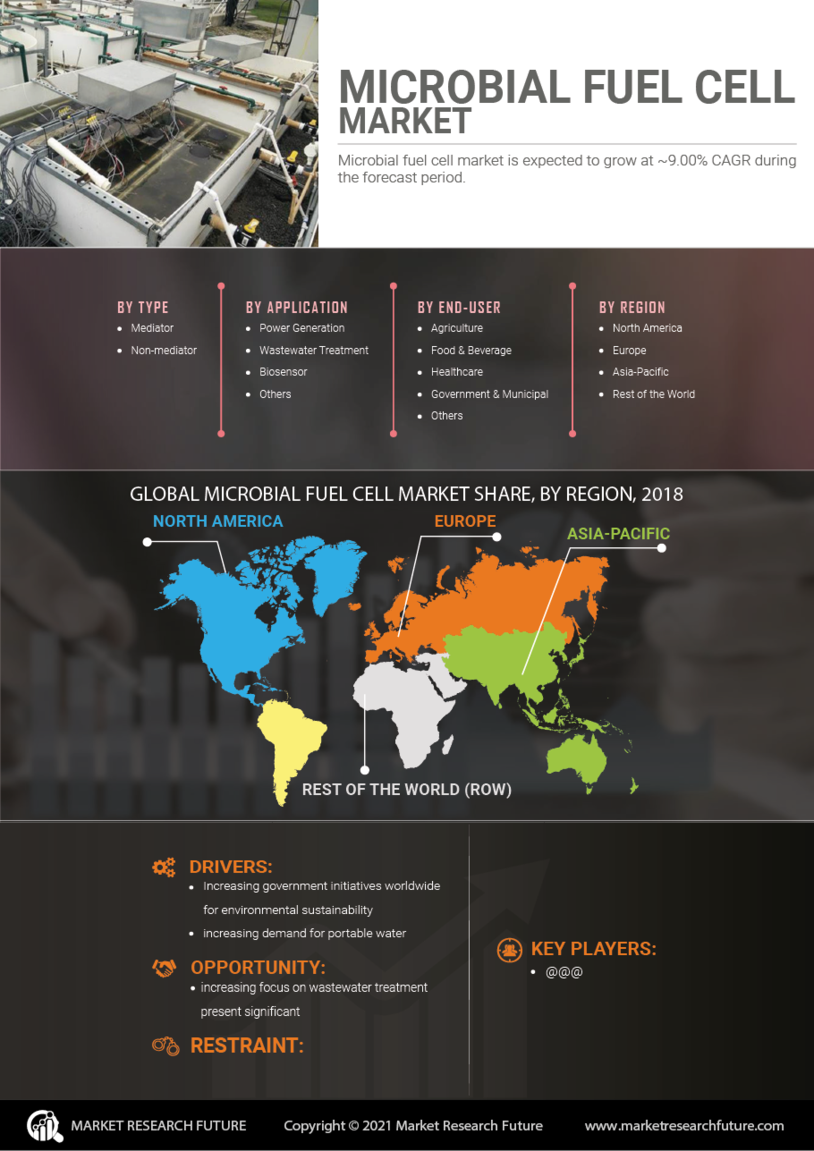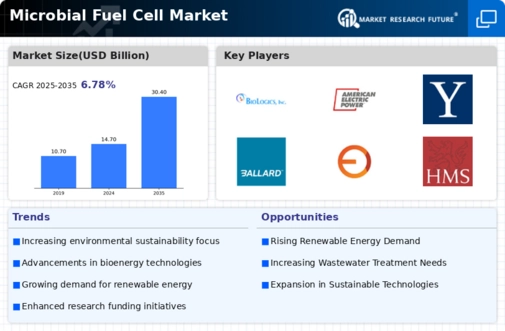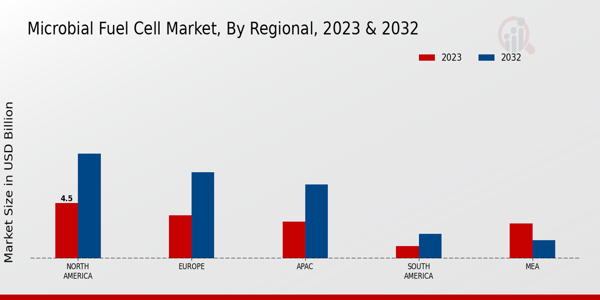Market Growth Projections
The Global Microbial Fuel Cell Market Industry is projected to experience robust growth in the coming years. With a compound annual growth rate (CAGR) of 6.87% anticipated from 2025 to 2035, the market is expected to expand significantly. By 2035, the market value is estimated to reach 30.4 USD Billion, reflecting the increasing adoption of microbial fuel cells across various applications. This growth is likely driven by advancements in technology, rising environmental concerns, and supportive government policies. As the market evolves, it may attract new players and investments, further enhancing its development and sustainability.
Government Initiatives and Funding
Government initiatives and funding significantly influence the Global Microbial Fuel Cell Market Industry. Many countries are implementing policies that promote renewable energy technologies, including microbial fuel cells. For instance, various governments are providing grants and subsidies to support research and development in this field. Such initiatives not only foster innovation but also encourage collaboration between academic institutions and industry players. As a result, the market is expected to benefit from increased investments, which could drive growth and facilitate the commercialization of microbial fuel cells, ultimately contributing to a projected market value of 30.4 USD Billion by 2035.
Advancements in Microbial Fuel Cell Technology
Technological advancements play a crucial role in the expansion of the Global Microbial Fuel Cell Market Industry. Innovations in materials, such as improved electrodes and membranes, enhance the efficiency and performance of microbial fuel cells. Research indicates that these advancements could lead to higher power outputs and lower operational costs, making the technology more attractive for commercial applications. As the market evolves, the integration of nanotechnology and bioengineering may further optimize microbial fuel cell designs, potentially increasing their adoption in various sectors, including wastewater treatment and renewable energy generation.
Growing Demand for Sustainable Energy Solutions
The Global Microbial Fuel Cell Market Industry is witnessing an increasing demand for sustainable energy solutions, driven by the need to reduce carbon emissions and reliance on fossil fuels. Microbial fuel cells, which convert organic matter into electricity through microbial activity, present a viable alternative. In 2024, the market is projected to reach 14.7 USD Billion, reflecting a growing recognition of the technology's potential in waste management and energy production. As governments and industries seek greener energy sources, the adoption of microbial fuel cells is likely to accelerate, contributing to a more sustainable energy landscape.
Rising Interest in Decentralized Energy Systems
The Global Microbial Fuel Cell Market Industry is experiencing a shift towards decentralized energy systems, driven by the need for energy resilience and sustainability. Microbial fuel cells can be deployed in remote or off-grid locations, providing localized energy solutions. This decentralized approach aligns with global trends towards energy independence and sustainability. As communities and industries seek alternatives to centralized power generation, microbial fuel cells may emerge as a viable option. The potential for these systems to operate independently while contributing to energy generation could significantly impact the market, fostering growth and innovation in this sector.
Increasing Awareness of Wastewater Treatment Solutions
The Global Microbial Fuel Cell Market Industry is also propelled by the increasing awareness of effective wastewater treatment solutions. Microbial fuel cells offer a dual benefit of energy generation and wastewater treatment, making them an attractive option for municipalities and industries. As urbanization continues to rise, the demand for efficient wastewater management systems grows. Microbial fuel cells can potentially reduce treatment costs while generating renewable energy, thus appealing to stakeholders looking for sustainable solutions. This trend is likely to enhance the market's growth trajectory, as more entities recognize the advantages of integrating microbial fuel cells into their wastewater treatment processes.






















Leave a Comment